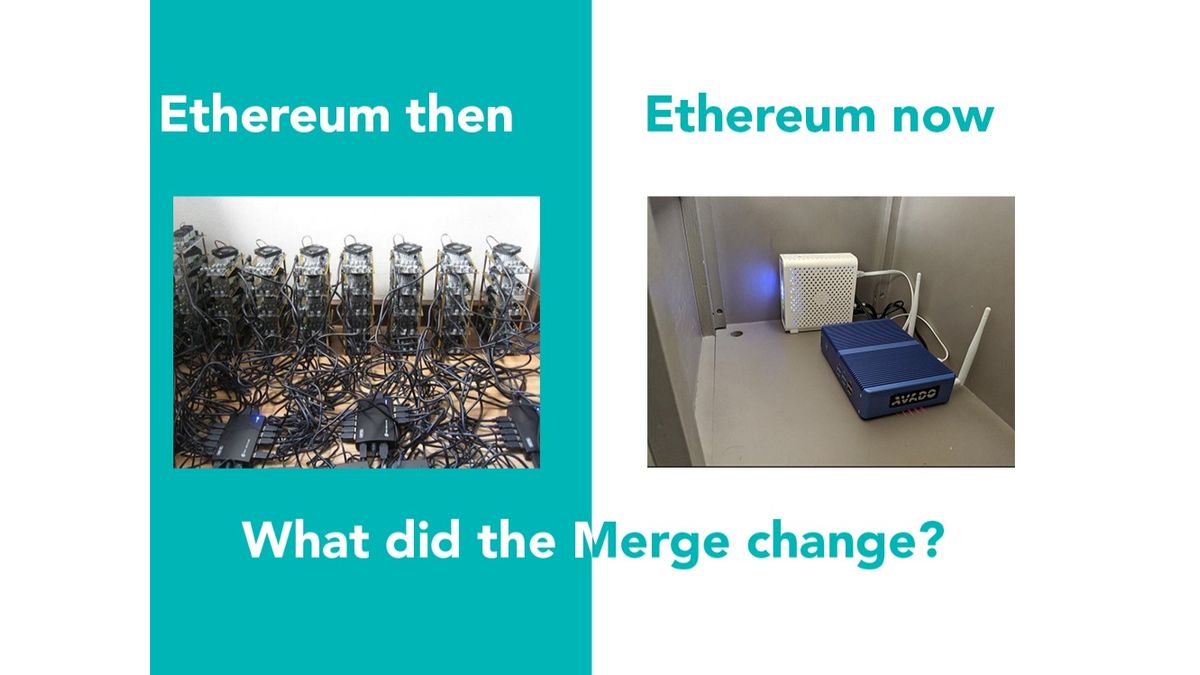
November 14, 2022
Ethereum’s New Upgrade: Here’s What The Merge Changed
Ethereum’s New Upgrade: Here’s What The Merge Changed
Over the last few years, the topic of Ethereum’s transition towards Proof-of-Stake has been dominant in crypto spaces and among people who are observing the landscape. Now, after years in the making, The Merge has finally taken place. With it, there are some significant changes in the Ethereum network that impact everyday users and stakers. This article will explain what those changes actually entail.
What is the Ethereum Merge?
Dubbed ‘The Merge’ by Ethereum proponents, this was a long-anticipated transition towards a new consensus mechanism that governs how blocks are verified on the Ethereum blockchain. Like Bitcoin, Ethereum was originally designed to employ a consensus mechanism known as Proof-of-Work (PoW).
The use of Proof-of-Work seemed like a necessary invention for allowing cryptocurrencies to exist on a peer-to-peer basis without relying on a bank or third party to keep the network secure. While PoW has been successful in preventing certain types of malicious attacks and double spending, it is not without its drawbacks. Namely, PoW networks consume immense amounts of energy and have given cryptocurrencies somewhat of negative stigma among sections of the public as a consequence.
Proof-of-Stake (PoS), on the other hand, has been a long-proposed solution that the Ethereum network could employ in order to significantly reduce energy consumption. At the same time, proponents fought to ensure that PoS would still be able to maintain the network’s security and independence from financial intermediaries. According to CNBC , The Merge has succeeded in reducing Ethereum’s energy consumption by more than 99%.
How The Merge took place
The transition into this new era of Ethereum arrived in the form of a merge between the active Ethereum Mainnet chain and an additional blockchain known as the Beacon Chain. The Beacon Chain was created in December of 2020 and ran parallel to the main Proof-of-Work chain that has long stood as the world’s second-most popular cryptocurrency by market cap and word of mouth.
By deploying Proof-of-Stake on this separate Beacon Chain for nearly two years prior to the merge, Ethereum developers were able to develop the network’s security and ensure its viability. Once the community and developers leading the Ethereum movement were prepared to do so, they finally merged the Beacon Chain with the Ethereum Mainnet. This means that all Ethereum (ETH) transactions are now using Proof-of-Stake instead of Proof-of-Work.
All of this occurred without having to erase any part of the network’s history. Rather, all of the previous Ethereum transactions, wallets, and holdings have been included in this merge. In addition, the first Proof-of-Stake transaction to occur on the Ethereum network since The Merge received a much higher client participation rate than it needed to in order to be approved, at nearly 100%.
What The Merge means for you
With The Merge, the process of staking Ethereum has become more readily accessible. This is because staking is now the process that the entire network uses in order to verify the validity of transactions. Whereas the task of keeping the network secure was previously a responsibility for miners, it is now validators who are tasked with doing so.
Running your own validator means staking a minimum of 32 ETH in the network. In exchange, you receive passive income as an incentive for your role in keeping the network secure. According to Ethereum.org , the current annual percentage rate on your stake would be approximately 4%.
In addition, there is currently over 15.2 million total ETH staked in the network, spread out across just shy of 450,000 validators. With the upcoming Shanghai upgrade, it will also become easy for people to withdraw their stake and enjoy their passive income rewards easier than ever before.
When it comes to using the network, nothing has changed for users and holders. When talking about a significant event in the lifestyle of the network, that is actually a very positive sign. It means that we have successfully witnessed one of the world’s largest cryptocurrencies move away from one of its largest hurdles without negatively impacting those who use the network in the process. As a result, The Merge is being lauded as an incredibly exciting time to be part of the cryptocurrency movement.
AVADO is making it easy to participate in Ethereum’s evolution
AVADO is a company that provides plug-and-play devices that allow anyone and everyone to reap the benefits of taking part in the Web3 movement. You do not need any prior experience or technical knowledge to use one of the blockchain devices offered in our extensive product range.
With an AVADO device and 32 ETH or more — you will be able to stake Ethereum and earn passive income in the process. You can even easily stake other popular cryptocurrencies like Avalanche, NEAR, Gnosis or Qtum at the same time while enjoying the security and autonomy that comes with operating your own device.
There has never been a better time to get involved in this exciting and constantly-evolving landscape.
If you are curious to find out more about AVADO, go to ava.do and join our Telegram group .